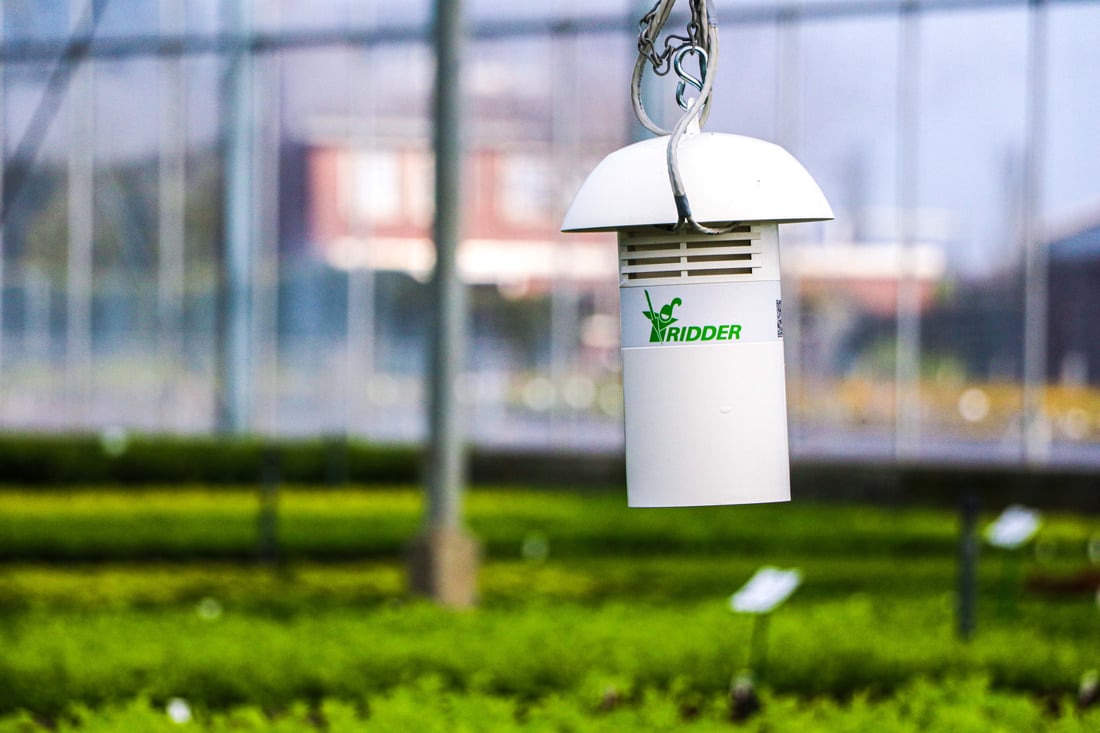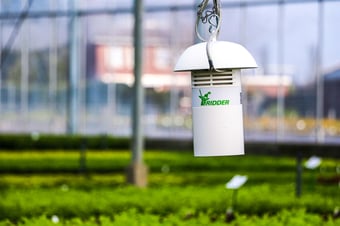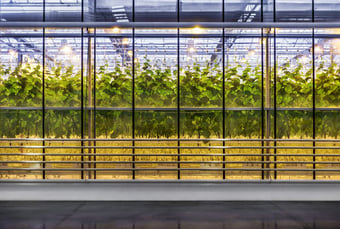Though this may seem overwhelming for growers with decades of experience, there are many reasons to embrace AI as a tool to make growing smarter, more efficient and more accurate. This blog breaks down exactly what AI in the industry can do, and how growers can benefit from taking steps towards a smart, high-tech greenhouse today.
What is AI in the horticulture industry?
AI is an evolving and rapidly increasing technology development within the greenhouse growing industry. AI’s core purpose is to analyse massive amounts of data being captured and uploaded by sensors in the greenhouse and crop registration and using intelligent algorithms to understand how this data can be best applied to a grower’s growing strategy.
For example, AI can interpret data from sensors on the greenhouse and individual plants to understand how opening screens affects growing in the greenhouse, how light affects plants, and how humidity and temperature influence every other factor in the greenhouse. This data helps inform plant-based, data-driven decisions for growers.
What is the best set up for a weather station?
A weather station is a vital part of a greenhouse growers set up. How it is configured is an equally important part of the equation.
Growers cannot control the inside the inside climate without knowing what is happening outside the greenhouse. There is no one-size-fits-all set up that will work optimally for every greenhouse, because every greenhouse is different. However, it is true that the optimal weather station set up will include all the standard weather measurements set out above, as well as humidity controls. This is because humidity sensors can significantly increase the accuracy of the overall climate control.
Humidity is included as standard with Ridder weather stations, as it’s very important in influencing growing conditions. Having a barometric sensor to measure air pressure also increases the accuracy of the reading for humidity levels and CO2 levels. This is also something that is included with Ridder weather stations as an additional measure that enhances accuracy.
AI is taking greenhouse growing industry by storm
The number of new skilled and expertise growers coming into the industry is low, but paradoxically, now more than ever more experience and knowledgeable growers are needed to cultivate food for a growing population. Because of this, each grower is required to do more, with less resources in many cases. AI can directly help to solve this problem.
The capacity for AI to analyse big data and aid a growers’ climate strategy is huge. AI is constantly developing and becoming more and more intelligent. In fact, AI is enabling greenhouse growing in an entirely different way. New growers are coming into the industry with less experience in greenhouse growing, but with the help of AI they are supported to grow in a data-driven way, rather than relying on just human experience.
Different companies are innovating to incorporate AI in different functions within their greenhouses. Some companies even aim to take over their whole climate and irrigation and energy management with AI- powered solutions. As a company, Ridder is AI-ready, and believes that AI is the future of growing in a smarter, more sustainable and more efficient way.
How can growers benefit from AI in the greenhouse?
So, now that it’s clear that constitutes AI in the industry, it’s time to look at how growers can benefit from AI. Although algorithms cannot yet fully replace the human touch, it can support growers in doing their job with the utmost precision, to achieve the best results.
The final goal of AI is to automate greenhouse processes for optimal and secure growing results. Increasingly investors are looking for high-tech AI-enabled greenhouses as they are seen as more reliable. This is because they are not relying on a single, skilled grower. It is instead a more scalable process, enabled by big data.
With the help of AI, growers will be able to scale-up and cultivate and manage a larger area of greenhouses. It provides greater confidence, accuracy and precision in decision making. AI allows growers to essentially transfer data and information to new recruits with technology that has recorded processes and outcomes from the greenhouse. It simply isn’t possible for growers who have 40 or 50 years of growing experience, to train a new work force as efficiently.
As the industry reckons with increased AI, one thing is clear. The world needs more food sustainably farmed, but there are less growers available to grow. That’s why AI will play an important role in making greenhouses smart and more efficient, to directly contribute to food security in future, and save costs for greenhouse operations.
Start smarter growing with AI
Find out more about how our smart process automation and climate control solutions are ready to create the optimal conditions for greenhouse growing with the help of AI. Download Ridder’s Process Automation Roadmap.




